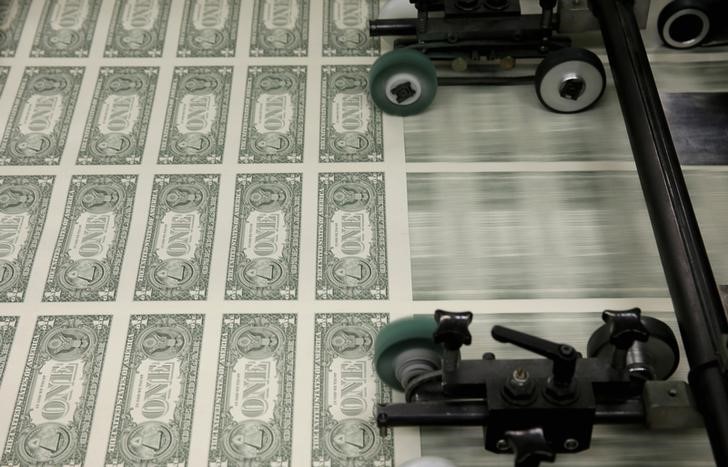Dollar slips from highs; euro gains ahead of ECB speakers
The U.S. dollar edged lower Tuesday, but remained near recent highs amid uncertainty over the pace of interest rate reductions as the US presidential election draws nearer.
At 04:40 ET (08:40 GMT), the Dollar Index, which tracks the greenback against a basket of six other currencies, traded 0.2% lower to 103.677, after overnight hitting their highest levels since early-August. Dollar helped by higher yields
The dollar slipped back slightly Tuesday, but had seen demand after the benchmark 10-year US Treasury yield climbed to a 12-week high.
Four Federal Reserve policymakers on Monday backed further reductions in interest rates following the central bank's decision to cut borrowing costs by an outsized 50 basis points in September.
However, comments from these officials seemed to indicate some lingering disagreement over the pace of the drawdowns.
Three of them said a "modest" or "gradual" lowering in rates may be warranted due to an uncertain outlook despite ongoing resilience in the US economy. Yet San Francisco Fed President Mary Daly suggested rates remain "very tight", adding that a strong economy should not preclude more cuts.
The greenback has also been buoyed by safe haven demand as traders turned risk-averse with about two weeks left until the 2024 presidential election.
“Our perception is that the size of the bond and FX moves are now being exacerbated by some deleveraging ahead of the US election,” said analysts at ING, in a note. “The path should be a stronger dollar if FX liquidity conditions indeed worsen into 5 November.” Euro gains ahead of ECB speakers
In Europe, EUR/USD edged 0.2% higher to 1.0833, ahead of a number of speeches from ECB officials in the wake of the European Central Bank’s latest interest rate cut.
“It is quite common for ECB members to fine-tune the policy message in the period after a rate decision,” said ING. “Naturally, should we see signs of faltering resistance towards easing by arch-hawks like Knot and Holzmann today, expect the euro to feel some additional pressure. Yesterday, hawkish member Kazimir said the December decision is ‘wide open’, quite a dovish shift from his pre-October meeting comments.”
GBP/USD rose 0.2% to 1.3003, after data showed that UK government borrowing increased by £2.1 billion against September last year to £16.6 billion, the highest figure for September since records began in 1993.
The Bank of England is set to cut interest rates in the upcoming months as it attempts to stimulate the British economy but this data release lays bare the dire state of the UK’s finances ahead of next week’s UK budget. Yen weakness on political change
USD/JPY rose 0.1% to 150.91, trading just below its highest level since late-July.
Weakness in the yen came as a change in the Japanese government’s leadership sparked doubts over whether the BOJ will be able to hike rates further. New Prime Minister Shigeru Ishiba explicitly stated that the Japanese economy could not handle more rate hikes.
USD/CNY rose 0.1% to 7.1214, rising close to close to a two-month high, after the PBOC cut its benchmark loan prime rate on Monday.
Source: Investing.com
